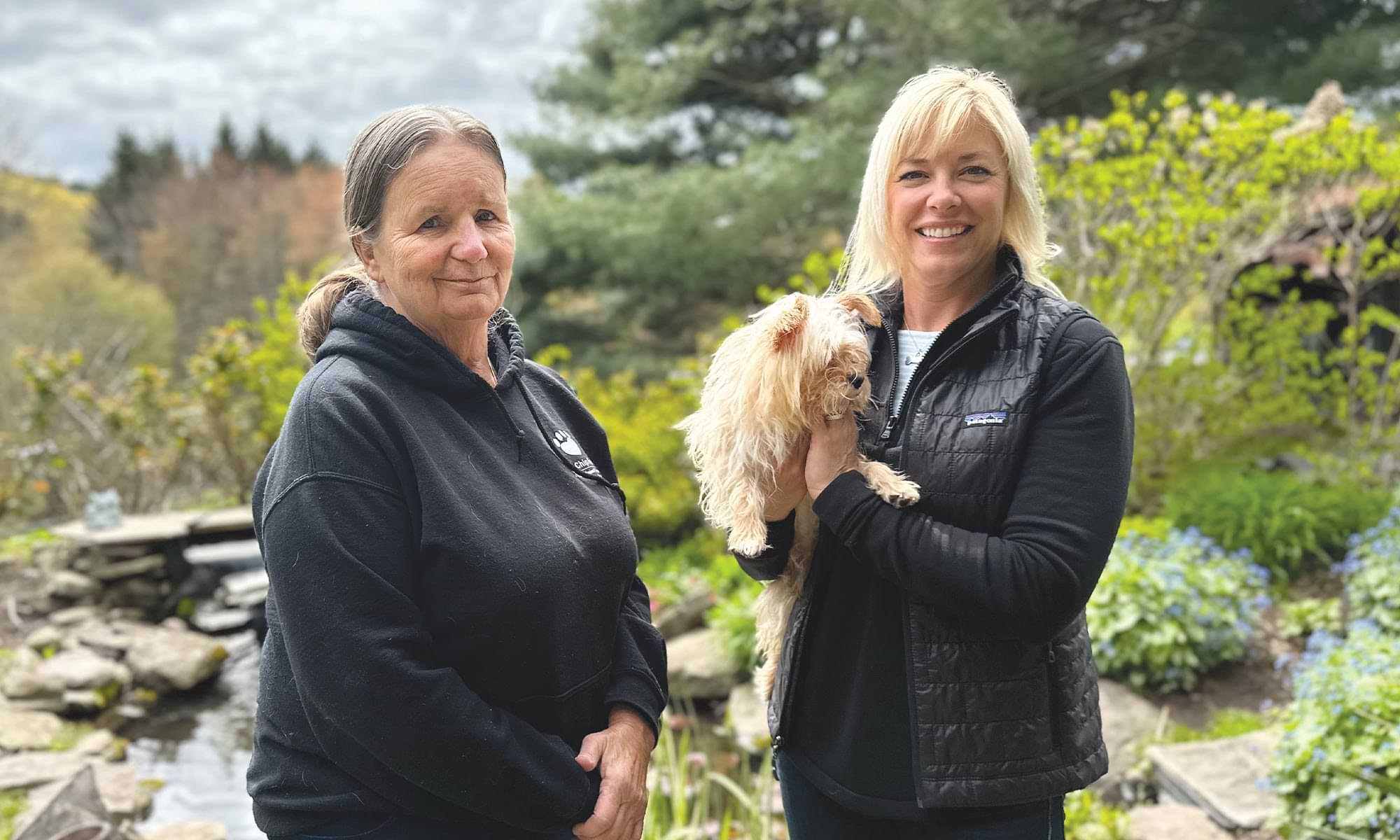Blue Chip Farm Animal Refuge
Giving Animals a Second Chance at Life

Marge Bart MBA ’85 and Cindy Charnetski ’97 (holding rescue dog Mario) at the Blue Chip Farm Animal Refuge in Dallas, Pa.
On a recent sunny spring day on the farm, Bart was holding a small, lively terrier mix dog named Mario. “He’s a perfect example of why I do this,” said Bart. “When he came here he was a ‘nipper,’ because he lived with an elderly lady and was fearful of others. If he had gone to a kill shelter, they would have put him down right away, because they don’t give second chances to biters,” she said, while petting a calm and affectionate Mario. “If they make a mistake, they can’t live. Which I think is terrible, and it’s another reason why I did this. I’ve made thousands of mistakes in my life. Can’t a dog make a mistake or two?”
The farm, located in Dallas, Pa., depends on help from lots of volunteers. Cindy Charnetski is one of them. A ’97 psychology grad, a member of the Board of Trustees and optometrist, she remembers a time when she wanted to be an animal rescue volunteer, but was afraid it would make her sad. But one day, she said, “I finally decided to give it a try. I have found that, although it can be emotional, it is truly the most rewarding way an animal lover can spend their time. Becoming involved at Blue Chip made me realize it is so much more important to help and to make a difference in a cause that I am so passionate about, instead of doing nothing because I’m afraid of the emotional aspect. Every single time I leave Blue Chip Farm, it is with a feeling of happiness and peace.”
Charnetski helps with fundraising and the “Rabbitat,” a cozy enclosure for rabbits of all colors and sizes. As she cut up fresh fruit and veggies and fed them to the bunnies, she said, “As you can see, there’s a lot to do here, and it’s not just the animals. Blue Chip does not receive any funding. They are 100 percent reliant on private donations.” The refuge, with the exception of one or two part-time people, is solely run by volunteers. All animals adopted at Blue Chip are spayed or neutered, up to date on vaccines and have been given a clean bill of health from a veterinarian. “The adoption fee only covers a portion of their expenses while at the shelter,” added Charnetski.
So what does Bart recommend people do to help dogs like Walter? “I would say never go to a pet store because you’re propagating the puppy mills. And don’t buy, adopt. Every dog here is adoptable.” Bart stressed that all dogs at Blue Chip are matched to the environment they are used to. Whether it’s a person who lives alone or a family with kids, Bart acts as the matchmaker for dogs and their future homes, and helps after they are adopted. “We even provide training for people so they can get along with the dog. We’ll do whatever we can to get them adopted.” Added Charnetski, “there are millions of pets without homes. As we say in the rescue world: Adopt, don’t shop!”
Bart said there are other ways to help, too. “Come and volunteer here or donate. We need food and supplies, and we always need money. The big thing is vet bills, because every dog we get goes to the vet for a check up, so the adopters know their history. I want them to adopt a dog for life.”
What’s in the future for Blue Chip? “We want to build more kennels next year because there’s just not enough space. If there’s more space, we can save more dogs,” said Bart.
Visit the Blue Chip Farm Animal Refuge Facebook page to see the latest available pets: @bcfanimalrefuge.
Register to become a volunteer on the Blue Chip website: bcfanimalrefuge.org.